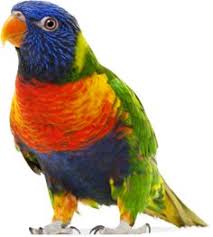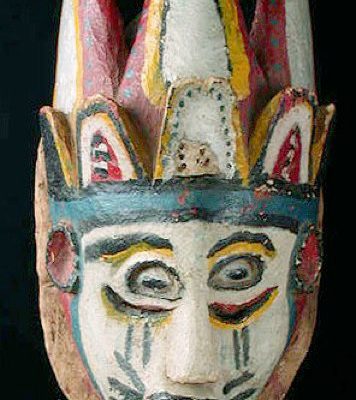For a long time, the ruling Third Igala Dynasty at Ídá was thought to have been founded by Àbùtù Ẹ̀jẹ, who was said to be a Jukun royalty that came from Wukari to Ídá and later took the title of Àtá (Father), King of the Igala. His descendants, including Ìdoko and his own son, Áyẹ́gbà, supposedly ruled after him at Ídá. By the same token, all Igalas who belong to the four existing ruling houses that descended from the loins of Áyẹ́gbà, were made to believe that they were Jukun by birth and Igala by circumstances of association, integration and acculturation, since Áyẹ́gbà was a great grandson to Àbùtù Ẹ̀jẹ. This notion seems to be misleading, as modern research findings have revealed.
Robert Arthur Sargent, in his Politics, Economics and Social Change in the Benue Basin: 1300-1700 (1984), attests to a contrary viewpoint that Àbùtú Ẹ̀jẹ̀ (in c. 1597-1627), was “the leader of the Leopard community,” the Igala component of the Kwararafa multi-ethnic confederacy, when its capital was at Bíèpì in Jukun area. Àbùtù Ẹ̀jẹ̀, as “a legitimate contender for the Kwararafa throne,” had thrown his hat in the ring to vie for it but was rigged out of the race in favour of his Jukun opponent, Àdì Àgbu Kènjo. His first reaction was to sever relations with the Kwararafa confederacy; then, he led a migration out of Biepi, accompanied by not just the Igala, his own group, but also the Idoma, Alago, Igbirra, some Hausa and Jukun. Moving southwards along the Benue River, the migrant groups finally reached the Agatu area, where they decided to set up camp. There, three of the groups – the Igala, Idọma and Alago – co-established a rotational political order, in which Kwararafa constitutional principles of a shared monarchy would be recreated,” and Àbùtù Ẹ̀jẹ̀ became the first to initiate a turn to rule as the ‘Àtá’ of Agatu, a title replicating its original held by the Ata-Igala at Ídá.
The migration he led out of Kwararafa severely depopulated it; so it set its military after the Agatu refugees, attacking them sporadically. One of those attacks “resulted in the death of Abutu Eje” and Adoga Oje, the Idoma leader, succeeded him in line with the rules of rotation that they had agreed to. The fallen hero was honoured with the epitaph, “Martyr of Agatu” and buried in the Òtutubátu Shrine at Àámagéde on the River Benue. He became a driving force and symbol of a struggle for freedom for the groups. The kings of Ígálá, Ìdọmà and Àlágó, till date, pay routine visits to Aamagede to commemorate him.
Towards the close of the seventeenth century, the Igala and Jukun (or Apa) were at daggers drawn over the demand for tribute by the Àkú Úkā of Wùkari from Àtá Ayẹ̀gbà, as his ancestors had done. But the Àtá refused to oblige on the ground that at no time was his kingdom a vassal to the Àpá Kingdom. Soon, tempers rose and push came to shove and Áyẹ̀gbà went on the offensive, not succumbing to intimidation. He directed his palace retainers, ‘Àmonójí,’ to fill nine sizable calabashes with dung, mixed with stones, seal them securely and deliver them to Wukari. That step sparked instant war and soon, Jukun troops were on the march to Ídá. On arrival, they camped on the eastern bank of the Ínáchaló River, on the capital’s outskirts.
Meanwhile, the Ífá Oracle was consulted and it decreed that, for King Áyẹ̀gbà to avert the looming war, he must sacrifice his most beloved daughter, Íníkpi, to the spirits of the land, a demand he considered an overkill and vehemently objected to. However, his daughter, seeing him so distraught, pleaded with him, over and over again, to allow her to pay the supreme price, “if only that would save your kingdom from going to ruins,” she had insisted. Then, crestfallen, Áyẹ̀gbà painfully yielded to her pleas. On the appointed day, Inikpi, accompanied by nine palace slaves bearing her earthly possessions, walked into a huge grave dug for them; and chunks of loose earth were piled on them.
Àtá Ayẹ̀gbà had engaged one Edegi, a Nupe Muslim occultist, who carried out the poisoning of the Ínáchaló River, causing shoals of fishes to rush to the surface; and the Àpá troops freely caught, roasted and consumed them all-night, dying in their dozens later. Those who survived and were too weak to fight took to their heels and were chased by the Igala militia, led by Àtá Ayẹ́gbà himself. On getting to the vicinity of River Ọ̀chẹ́kwu in Idọmaland, the enemies surrendered. There and then, both parties agreed to the river being the physical boundary of their two kingdoms, thus, bringing the war to an end.
Àtá Ayẹ́gbà, in gratitude to the gods, offered three other daughters: Ọ́ma-odòkó, who was buried on the bank of Ínáchaló, where her statue still stands; then, Ónojò–Alíkáà and Ónojò–Alẹ́gbẹ̄, interred at unknown locations in the metropolis. Íníkpi’s tomb was, originally, an earthen mound; but, in 1953, Ata Àámẹ́ Òbòní caused her statue to be erected on it. It now stands at Ídúù-Òkólíko, overlooking the River Niger to the south of Ídá.
Apart from paying a handsome amount to Edegi, Áyẹ́gbà also betrothed his daughter, Ódó, to him. Happily, he rowed home on the River Niger, accompanied by his followers. As the Igalas say: “When a mother-hen captures a large, white caterpillar (íkpētà) in a dump-site, she finds the way to her pen.” Edegi, now inhis home area, founded a settlement and named it: ‘Àbó-Idá,’ (Ídá people). Over time, it was reduced to ‘Bídā.’ Today, it is a big town in Niger State, Nigeria and its Emir is traditionally regarded as the Ata-Igala’s younger brother.
It is interesting, if not astoundingly incredible, to note that the fishes of River Ínáchaló, since the war, can no longer be cooked, as they will not get done, no matter how long they stay on the fire. Another memorable memento left behind were tubers of Sweet potato, (Úchu-Àpá), which, later, became a staple food in Igalaland, even cultivated in commercial quantities. A royal souvenir from the battlefield was an awe-inspiring masquerade called Èkwé, which was unavoidably abandoned by his fleeing compatriots and was taken into custody. Today, it is the head of the Àtá’s nine royal masquerades, symbolizing the dead of the kingdom and also regarded as the Father of all incarnate beings in Igalaland.
Áyẹ́gbà, after the war, reorganized his kingdom, awarded titles to legions of bureaucrats and represented every segment of society in his government. Trade and tourism flourished and, by the time he joined His ancestors in c. 1717 A. D., he had created a structure that accelerated the growth of an egalitarian, democratic state. According to Miles Clifford, “In the long line of Atas that followed, he stands alone,” hence, his numerous legacies live on.








